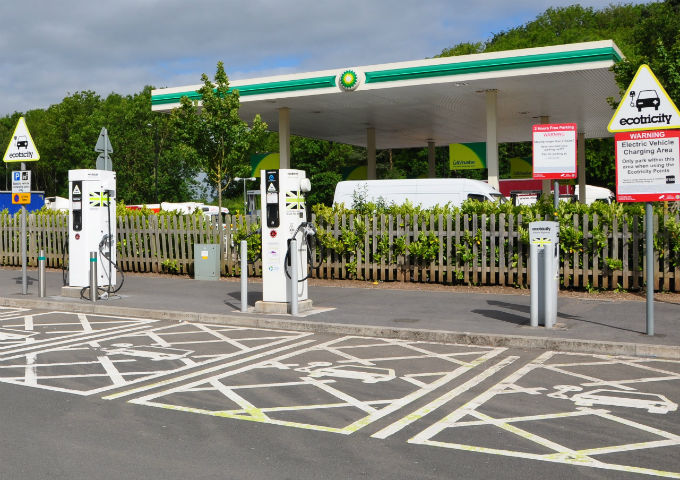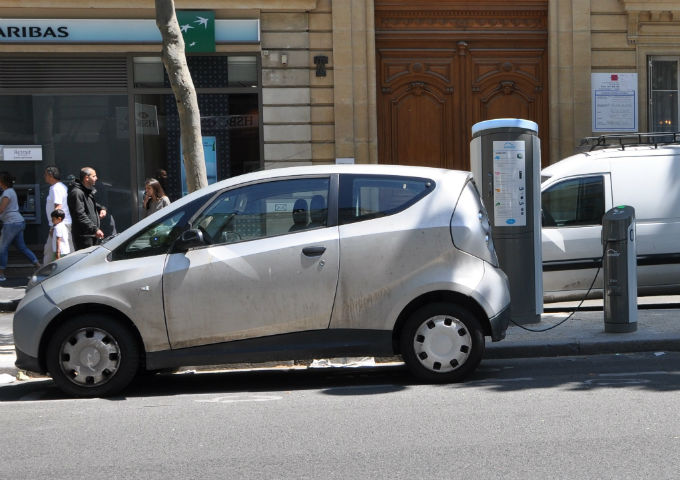-
Member Login
- Home
- About
- Institute Groups
- Membership
- Events
- News & Publications
- Institute Programs
- Resources
- Jobs Board
- Contact Us
- Site Info
News from the President - July 2015
I have recently returned from an extended personal visit to Europe and the United Kingdom, where I was struck by several things that are important issues for environmental practitioners and good practice environmental management in Australia and New Zealand.
Climate change and renewable energy
The first was the apparent pace at which renewable energy generation technology is being installed, notwithstanding the shifts that are occurring in government policy. Energy consumers in Europe and the United Kingdom have embraced solar, wind and wave energy as viable renewable sources of electrical power. Electricity as an alternative energy source for personal mobility, is being demonstrated by the increasing abundance of charging stations on the highways at service centres operated by ‘big oil’.

It is also demonstrated by the large numbers of solar arrays sitting atop industrial and commercial buildings, or on land adjoining production plants, and domestic scale installations.
While we still debate the viability of bicycle hire systems; cities in Europe and the United Kingdom have gone a step further, with readily available electric motor vehicles. I watched a person use a mobile phone to access a small car by reading the barcode on the front window, unplugging from the electric charging station, and driving away. Returning an hour or so later the process was simply reversed, and the person’s credit card account was charged for the use of the vehicle. Just as the bicycle hire systems are an integral part of a modern metropolis, so too are small electric motor vehicle hire systems.

While at the moment in Australia, the Queensland Government is calling for expressions of interest to build Australia’s first solar-powered fast-charging station for electric cars in Townsville.
On 15 June 2015, The Guardian newspaper carried an article on the forthcoming 21st UN Climate Change Conference based on an International Energy Agency report (1) that proposes five measures for addressing the climate change challenge:
- Increasing energy efficiency in the industry, building and transport sectors
- Phasing out of least-efficient coal fired power generation
- A large increase in investment in renewable energy
- Gradual phasing out of fossil fuel subsidies
- Reducing the release of methane to the atmosphere in oil and gas production.
On 25 July 2015 The Weekend Australian carried an article that quotes former World Energy Council European Chairman Johannes Teyssen as saying:
On the one hand, the energy world of the future – characterised by renewables, intelligent networks and tailor made customer oriented energy solutions – is taking shape rapidly.
On the other hand, the classical energy world – of the backbone systems characterised by high volume production and trading structures for electricity, gas and other commodities – remains irreplaceable for the public good. (2)
Australia is a continent that straddles the windy southern latitudes. It is a continent that receives the highest average solar radiation per square meter of any continent on the earth. These are natural attributes that portend real opportunities to lead in the transition to a renewable energy supported economy.
There is much to be done by Australia and New Zealand to demonstrate to the rest of the world, when it meets in Paris in October 2015, that there are timely effective plans to shift investment priorities to the use of the renewable natural attributes of our nations, and to support global action to mitigate the climate changing impacts of fossil fuel based energy generation.
At an Institute-level, the Climate Change Special Interest Section has developed the Learning to Adapt Program to provide timely leadership and training to a broad range of environmental professionals. The course is run over three full days of intensive collaborative learning. It has run successfully in New South Wales over several years, and is this year being rolled out in Victoria and Queensland. If you or a colleague are looking for an excellent opportunity to understand more about how, as an environmental professional, you can respond to a climate challenged world, here is your opportunity.
As environmental practitioners we all have a role in advocating the adoption of technologies that are based on renewable sources of energy.
Leadership in Environmental Policy
In the last three months, several important documents have been released to inform and lead the public understanding of environmental policy and good practice environmental management.
At a global level the release by Pope Francis of the encyclical Laudato Si’ – On the care of our common home (3) is a call to the Roman Catholic and the global community; not just about climate change but about how the world’s natural resources and the environments that they constitute are managed. It challenges the world community to adopt a renewed mission to create a dialogue about how we are shaping the future of the planet.
At a national level the recently released Australian Government Threatened Species Strategy comes on the heels of two other pieces of work that are relevant to the interests of environmental practitioners in ecology and threatened species conservation.
The first of these is a seminal paper “Accelerated modern human–induced species losses: Entering the sixth mass extinction” authored by Dr Gerardo Ceballos, Paul R Ehrlich and others (4), that tested the oft-repeated claim that the Earth’s biota is entering a sixth “mass extinction”. The paper concludes that even under very conservative assumptions, the average rate of vertebrate species loss over the last century is up to 100 times higher than the background rate, indicating that a sixth mass extinction driven by human activity is already under way. The authors asserted that averting a dramatic decay of biodiversity and the subsequent loss of ecosystem services is still possible through intensified conservation efforts, but that window of opportunity is rapidly closing.
The second is a brief report released in July 2015 by the Australian Conservation Foundation, Birdlife Australia, and Environmental Justice Australia on Recovery Planning – Restoring Life to our threatened species (5). This report points out that extinction is a choice of how the community invests its resources, and where resources have been invested in recovering species in the past, environmental practitioners have been remarkably successful. The report analyses a number of recovery plans for 120 of the most endangered animals, showing that these documents consistently avoid prescriptive measures to protect threatened species. The report makes a number of recommendations for developing and implementing more robust recovery plans and the financial support for their implementation.
The Australian Government Threatened Species Strategy helps knit the ideas contained in these documents together. It is in its early stages of implementation. Supported by an initial Action Plan that invests in feral cat control, establishing safe havens for species most at risk, improving habitat and its connectivity, and emergency interventions to avert extinction threats; its success will be dependent on the willingness of governments and the community to sustain the level of investment that is required. One of the keynote speakers at the 2015 EIANZ Conference Challenging the Status Quo – Excellence in environmental practice will be Gregory Andrews, Threatened Species Commissioner, Department of Environment who is responsible for leading the development and implementation of the strategy. Come and join you colleagues at the conference by registering now.
The Institute’s Ecology Special Interest Section (SIS), and particularly its New Zealand members, has developed New Zealand guidelines for ecological impact assessment as a basis for:
- Improving the scientific rigour, objectivity and consistency of Ecological Impact Assessment
- Guiding policy around biodiversity management
The Ecology SIS is working on finalising general guidance material on ecological impact assessment for Australasia, and developing new guidance material around good practice environmental management as it applies to threatened species. If these are things that interest you contact Dave Fleming, Chair Ecology SIS at dfleming@ehpartners.com.au.
The Ecology, Impact Assessment, Climate Change and Contaminated Land SISs are the ‘knowledge factories’ for the EIANZ, and great opportunities for participation by environmental practitioners in the development of good practice environmental management.
Leadership in the profession
In all of these matters, there is a critically important role for professional environmental practitioners. The Institute provides a framework for credentialing members of the profession and assuring the community of the value of those credentials by holding them to account to the EIANZ Code of Ethics and Professional Conduct. If you know of an environmental practitioner who is not a member of the Institute, then encourage them to join today. They too can then be recognised for the credentials they carry as a member (MEIANZ) or a Certified Environmental Practitioner.
Jon Womersley FEIANZ CEnvP
President
References
1. https://www.iea.org/publications/freepublications/publication/WEO2015SpecialReportonEnergyandClimateChange.pdf (Accessed 26/07/2015)
2. “Europe beats a retreat from renewables”, G Lloyd, Environment Editor, The Weekend Australian, Inquirer, pg 17, 25-26 July 2015
3. http://w2.vatican.va/content/francesco/en/encyclicals/documents/papa-francesco_20150524_enciclica-laudato-si.html (Accessed 26/07/2015)
4. http://advances.sciencemag.org/content/1/5/e1400253 (Accessed - 26/07/2015)
5. http://www.acfonline.org.au/sites/default/files/resources/Recovery_Planning_Report.pdf (Accessed - 26/07/2015)
We acknowledge and value the rights and interests of Indigenous Peoples in the protection and management of environmental values through their involvement in decisions and processes, and the application of traditional Indigenous knowledge.

